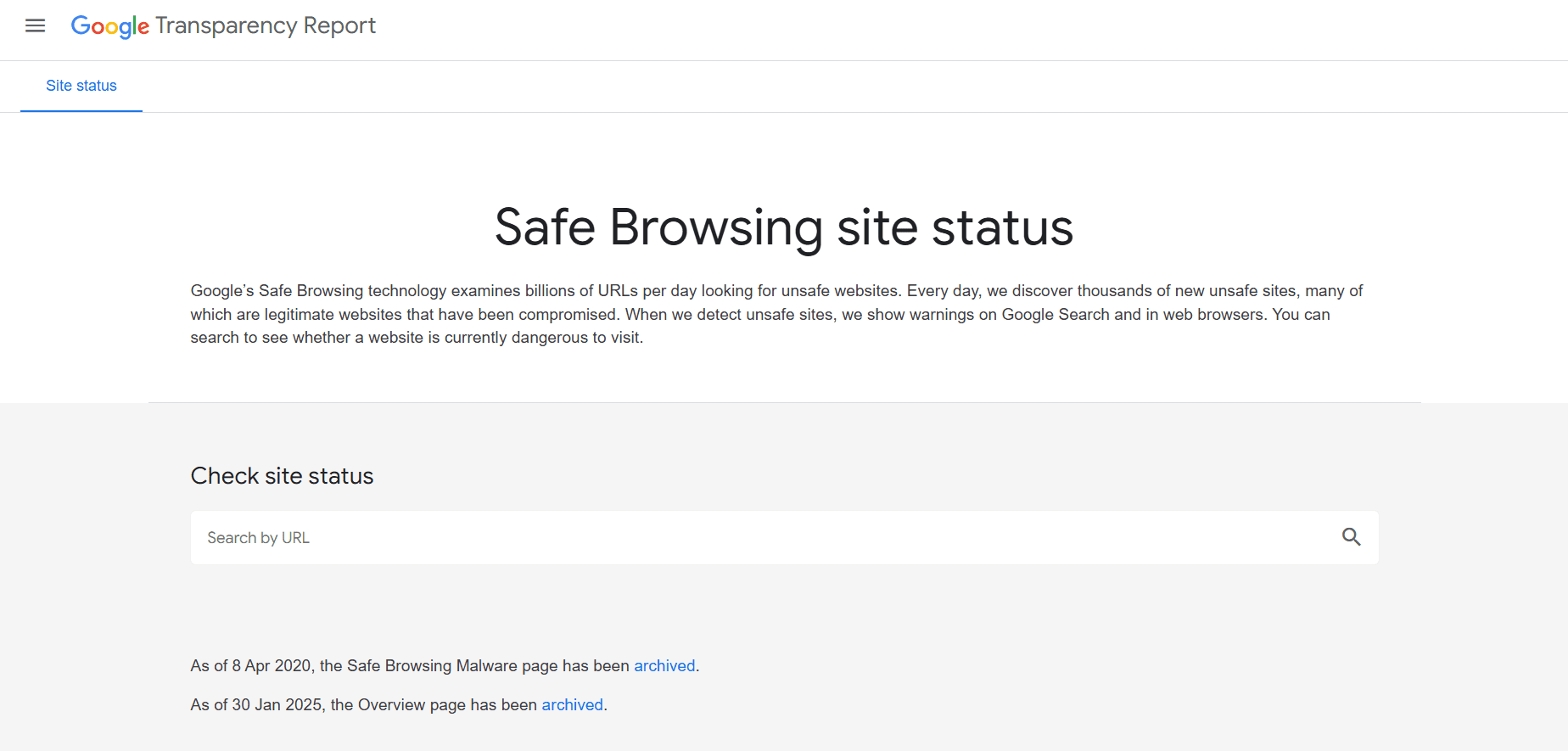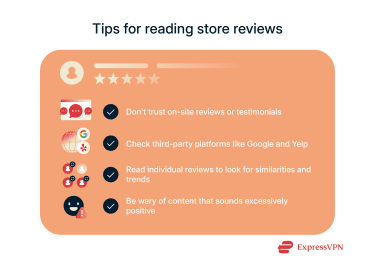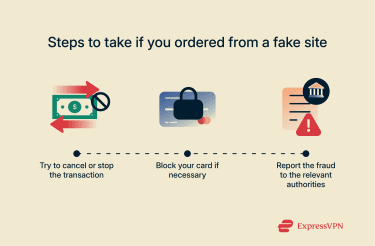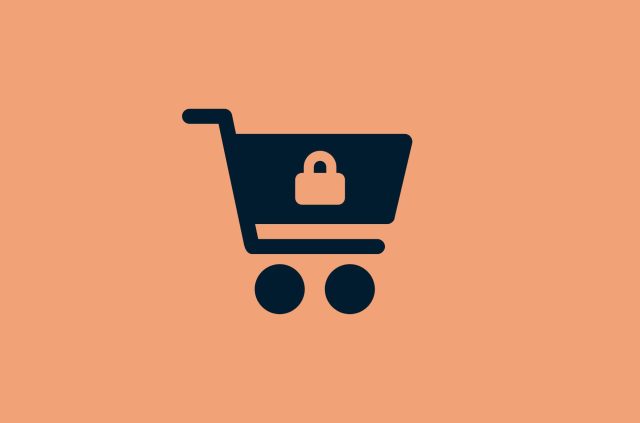How to tell if an online store is legit: 12 clear signs to check

That trendy online store offering 70% off your favorite brand? It might be too good to be true.
Scammers are getting better at mimicking real e-commerce sites, but there are still reliable ways to spot the red flags. Here are 12 clear signs that can help you figure out whether a store is legit or a scam waiting to happen.
12 reliable ways to check if an online store is legit
1. Study the URL carefully
A lot of fake store websites have URLs that look almost identical to real, authentic stores. They could use something like “amaz0n.com” or “amazon1.com.” Many people fail to notice these minor differences at first glance and end up falling victim to the fake sites.
To avoid that, make sure you read the URL closely and be wary of any discrepancies. Look for even the slightest and most subtle typos or use of alternate symbols, like numbers in place of letters.
2. Look for the HTTPS padlock and TLS certificate
After checking the URL, look for the little padlock icon that should appear next to it in your browser’s address bar. That will show you whether your connection to the website is encrypted, but keep in mind it will not tell you if the site itself is safe.
Fake sites can still have the padlock icon and HTTPS addresses, so don’t automatically trust a site just because it has that symbol (but distrust it automatically if it doesn’t).
3. Use a website safety checker
Website safety checker tools like Google’s Safe Browsing site status can scan site links for you and let you know about their reputation and whether or not they contain any unsafe content, giving you a good idea if they’re safe to visit or not. It’s worth bookmarking one or more of these tools to check any sites you’re suspicious of or unsure about.
4. Research the domain’s history
You can also look into the history of individual web domains using various free online tools, such as who.is, which will tell you all about when a domain was created, who owns it, and any ownership changes over the course of its existence. The Wayback Machine is another useful tool to help you see how a domain might have changed over time. Look for snapshots of the site you’re researching at various dates over the years since it was created. This will tell you if the site has always been the same or if it might have had a different design and usage in the past.
The Wayback Machine is another useful tool to help you see how a domain might have changed over time. Look for snapshots of the site you’re researching at various dates over the years since it was created. This will tell you if the site has always been the same or if it might have had a different design and usage in the past.
These tools and others will help you learn about who owns the domain, whether or not it has been blacklisted, if it has any reputation issues, and so on.
5. Check for poor design or pixelated images
Take a close look at the site’s general design and aesthetics. Legitimate sites tend to be well-made by professional designers, with high-quality images and a sensible layout.
Fake sites, meanwhile, may have telltale signs of sloppy construction, like low-quality images that appear blurry or pixelated or basic and outdated design elements.
This can apply to both banner images at the top of the site’s home page, as well as individual product pictures, which may have been simply copy and pasted from more legitimate sources.
6. Look for spelling errors and bad grammar
Another sign that a site has been hastily constructed and could be fake is when its text contains spelling mistakes or grammatical errors. Again, you don’t tend to spot such things on real sites, as their pages and product descriptions are carefully edited and proofread, but illegitimate store owners may not put as much time and effort into such tasks.
It’s worth noting, however, that with generative AI tools widely available nowadays, fake site owners may turn to AI to generate text for their product descriptions and webpages. AI-generated text may appear more professional and is unlikely to contain typos or mistakes but may seem vague or repetitive and lacking in personality.
7. Evaluate contact information availability
All safe, professional online stores make it easy for customers to get in touch with customer support and service teams. They might have live chat, email, and a helpline to call. Fake sites may not have any of these options, or the contact credentials they provide might be completely unresponsive.
You may see, for example, that a store only has a basic online contact form for you to fill out, rather than any specific email addresses or live chat systems to use. If so, it’s worth filling out the form and trying to contact the company before you make a purchase. Often, fake site owners won’t even respond or will be very slow and unhelpful with their support.
8. Be cautious of unrealistic prices and “too good to be true” deals
As touched on earlier, many fake sites trick victims by claiming to offer high-quality or big-brand goods at super low prices. But, as the old saying goes, if something sounds too good to be true, it probably is.
So, if a store is offering the likes of $1,000 designer handbags for only a couple of hundred bucks or high-end watches for a fraction of the usual price, they’re almost certainly either imitations or part of a larger scam in which you won’t even receive any product at all.
9. Read independent customer reviews
Before ordering anything from a site for the first time, it’s always worth reading some independent customer reviews. That means reviews on platforms like Yelp, Google, and social media, rather than those published on the store itself. Reviews should give you an unbiased view of a store, as well as alerting you to any possible scams or suspicious activity.

At the same time, note that reviews can be faked, and fake site owners might use bots or other methods to boost their online reputations. So, when reading store reviews, look for common red flags, like excessively positive language, no negatives whatsoever, and a lack of detail.
You may also notice that the accounts posting these reviews haven’t posted reviews for many or any other stores, which is another sign that they’re most likely either paid for or fake.
10. Verify the presence of trust seals
Trust seals are like little badges of authenticity attached to sites that have been deemed legitimate and trustworthy.
One example is the TrustedSite seal. This is a clickable seal that verified sites can add to their webpages, and users can click on it to see the specific validation page for the site in question, which confirms the site has passed various security scans and meets certain standards.
If a site has a TrustedSite seal or other official security mark, like the Better Business Bureau (BBB) seal or DigiCert Secured emblem, then that’s usually a sign of credibility. However, fake site owners may simply paste images of these seals onto their sites to try to trick users. Verify them by clicking the seal and reviewing the validation page that should open.
11. Inspect return, refund, and privacy policies
Legitimate online stores always have clear and detailed policies regarding returns, refunds, and how they use customer data. You can usually find and review these policies quite easily, and it’s worth checking them out, especially on stores you’re unsure about. Fake stores may not have any returns/refund policy at all, or the text might be littered with errors and inconsistencies.
12. Review the brand’s social media presence
Most online stores nowadays have profiles on the big social media channels, like Facebook, Instagram, etc. Check to see if the store you want to buy from is active on these platforms and look at how many followers or fans they have, what people are saying about them, how often they post, and so on. Look for any suspicious signs, like low engagement or bot-like comments.
How to avoid fake shopping websites
Knowing how to tell if a website is a scam is a big step toward avoiding these sites, but there are several more helpful tools and best practices you can follow to stay safe.
Use ExpressVPN’s Threat Manager
In addition to phishing protection most modern web browsers have automatically switched on, you can use other tools, like ExpressVPN’s Threat Manager, included with all ExpressVPN subscriptions. Threat Manager can automatically block unsafe sites and prevent them from tracking you around the web. It does this by comparing the URLs you want to visit with a regularly updated list of known malicious websites. It’s a useful addition to your phishing protection that further reduces the chances of landing on a fake website.
Rely on reputable price comparison sites
Major price comparison sites exist to help users find the best deals on products from various retailers. They only scan sites that are trusted and legitimate, so they can help you find what you want at the right prices without having to visit any shady online stores.
Don’t click suspicious ads or pop-ups
Many fake site owners use annoying ads, pop-ups, or even phishing messages to get people to click and visit them. Avoid clicking on any ads, pop-ups, or suspicious links as a general rule to stay safe online.
What to do if you ordered from a fake online store
If you’ve inadvertently fallen victim to a fake site, it’s important to stay calm but act fast to protect your money and your data.
Steps to protect your money and identity
Firstly, protect your funds by contacting either your bank or the payment provider you used to make the purchase and let them know what happened. They may be able to cancel or reverse the payment, and you may also need to cancel your card if the criminals know its number.
If you believe you’ve given away any other important personal information, make a report via the Identity Theft website (for U.S. users) or a similar service in your region.
How to file a chargeback or dispute
If you act fast, you may be able to initiate a chargeback (for credit card payments) or payment dispute to have a payment canceled. To do this, you’ll need to contact the bank or financial institution that issued you the card and follow their instructions.
Who to contact to report online shopping fraud
Those in the U.S. should contact either the Federal Trade Commission (FTC), the Internet Crime Complaint Center (IC3), or both. People in other countries may have similar authorities to contact in cases of suspected fraud.
FAQ: Common questions about fake online stores
Can you check if an online store is legit?
Yes, there are website checker tools that can help you find out if a site is legitimate, and you can use other methods, too, like reading customer reviews, looking at the site design, reading the refund policy, and so on.
What indicates a fake online store?
Fake stores often have unrealistic prices or deals that seem too good to be true. They may have design flaws, too, like blurry images, typos in the text, or a URL address that is slightly “off.”
How do you look up if a website is legit?
You can use checker tools like Google’s Safe Browsing site status to learn about the security and trustworthiness of a website.
Take the first step to protect yourself online. Try ExpressVPN risk-free.
Get ExpressVPN





















Comments
I’m still new at all this on line stuff, And I have learned more on this site in 5 minutes than the 2 years I’ve had my phone. Thank You